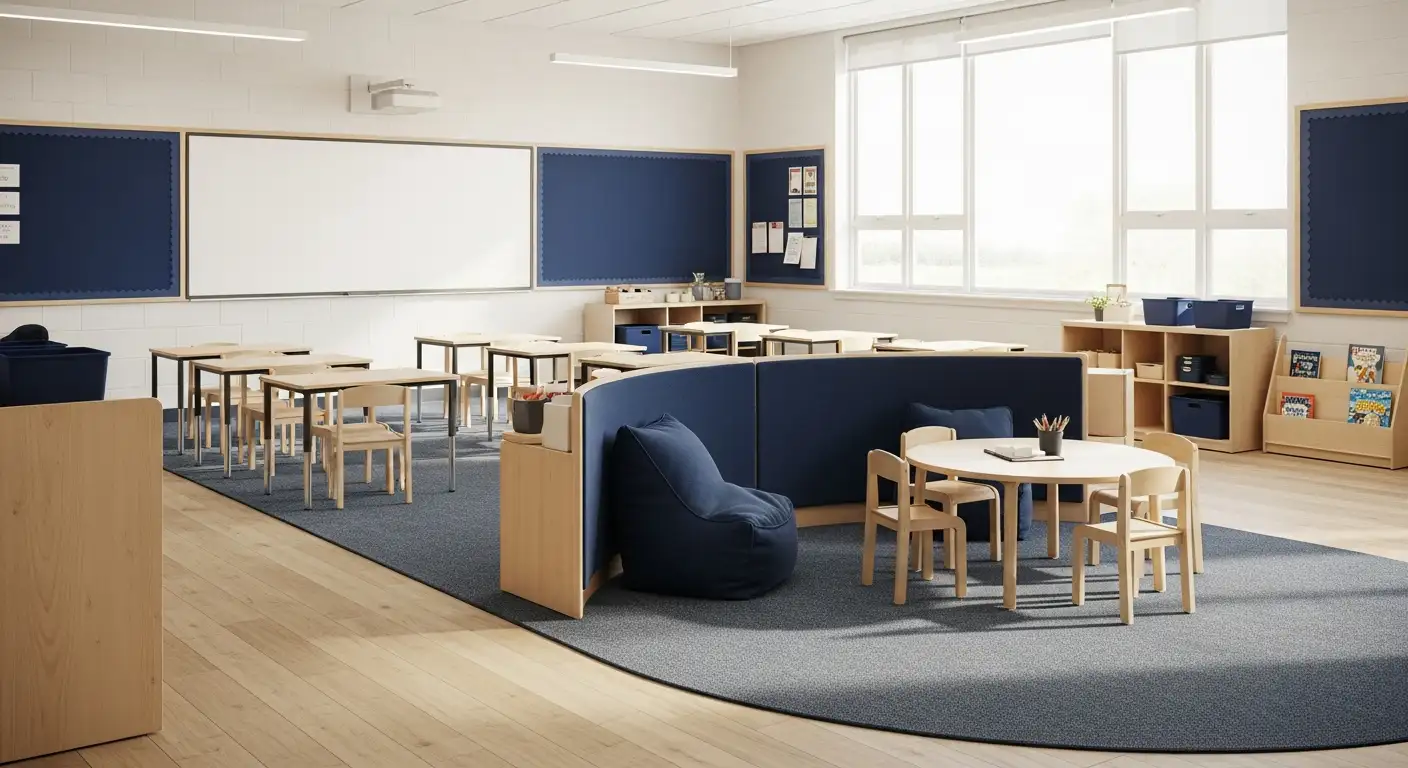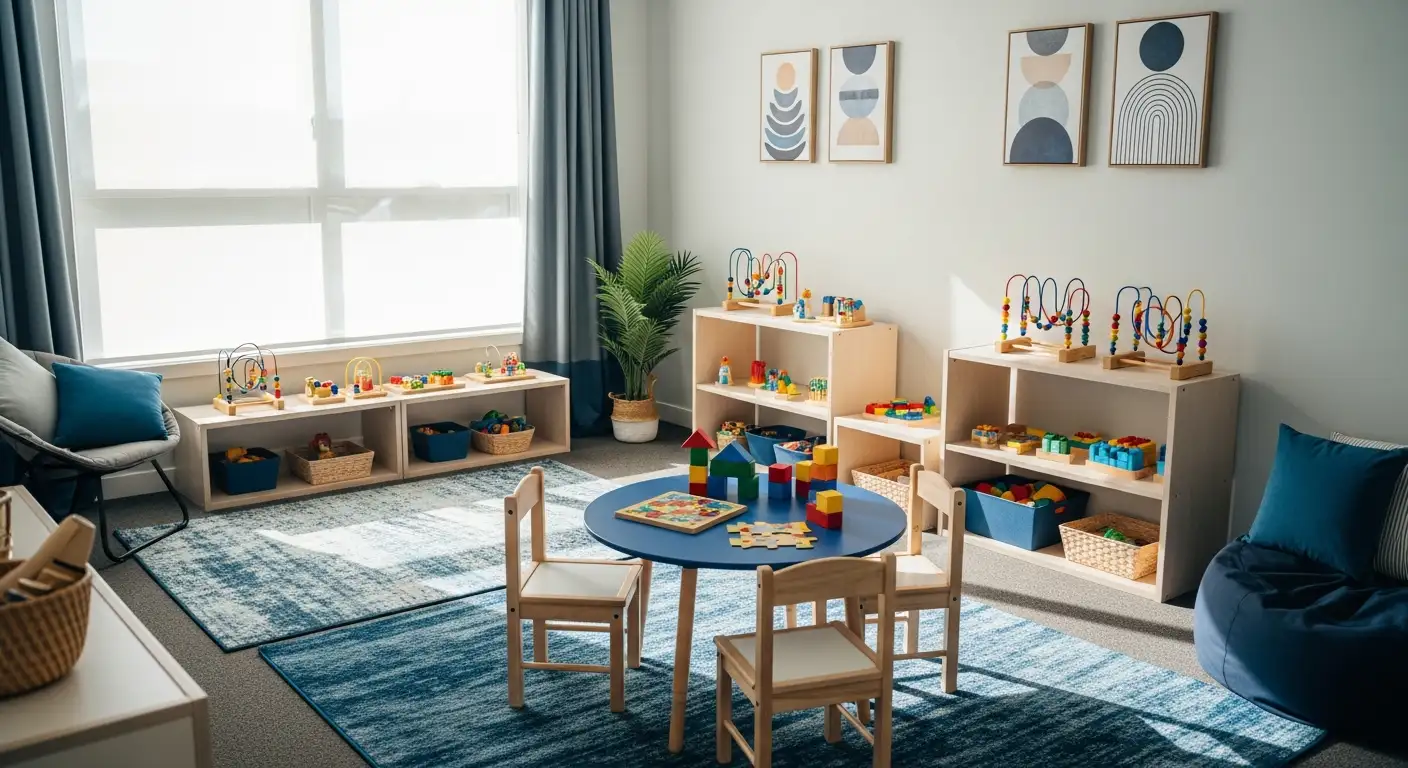The Role of Occupational Therapy in Autism Transition Preparation
Empowering Autistic Adolescents: Occupational Therapy's Critical Role in Transitioning to Adulthood

Understanding the Importance of Transition Preparation in Autism
Transitioning from adolescence to adulthood poses unique challenges for autistic individuals, especially in developing independence and participating meaningfully in daily life. Occupational therapy (OT) plays a vital role in preparing autistic adolescents for these transitions by promoting functional skills, engagement, and self-determination. This article explores how evidence-based occupational therapy interventions support autistic youth through transition preparation, highlighting multidisciplinary approaches, strengths-based practices, and integration of technology to foster independence and quality of life.
Foundations of Occupational Therapy in Autism Transition Preparation

What is the core role of occupational therapy in supporting autistic individuals during transition?
Occupational therapy (OT) plays a vital role in supporting autistic individuals as they prepare for major life transitions. The core function of OT in this context is to help individuals develop, regain, or modify essential skills that promote meaningful participation in daily activities. This encompasses gaining greater independence in activities of daily living (ADLs), social engagement, safety awareness, and strategies for emotional and sensory regulation.
Individualized evaluations are fundamental to this process. Through these assessments, occupational therapists identify each person’s unique strengths, challenges, and personal goals. This tailored approach ensures that interventions are relevant and responsive to the individual's needs, promoting more effective functional outcomes across various settings such as home, school, and community.
Environmental adaptations enhance accessibility and support, creating spaces that accommodate sensory and functional needs. These changes, combined with care partner education and coaching, empower families and caregivers to support the continued development of skills beyond therapy sessions. Such holistic strategies reinforce consistency and participation, helping autistic adolescents navigate transitions with increasing confidence and independence.
By focusing on participation and functional outcomes rather than only deficits, occupational therapy affirms autistic strengths and promotes sustained engagement in meaningful occupations throughout life changes.
Evidence-Based Practice Guidelines Supporting Occupational Therapy Approaches
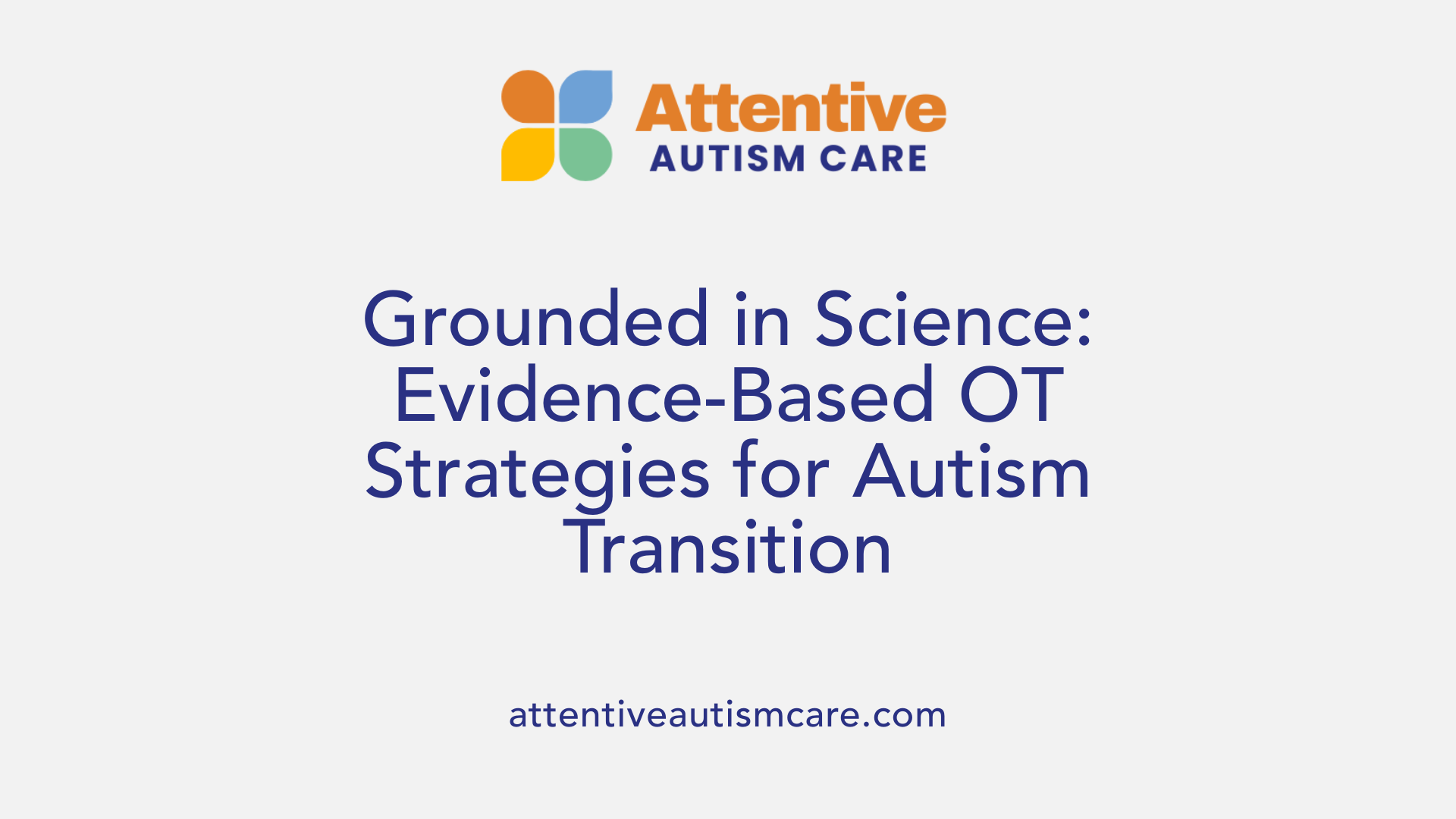
What evidence underpins occupational therapy interventions for autistic individuals?
Occupational therapy practice with autistic individuals is firmly rooted in systematic reviews that utilize rigorous methodologies such as Cochrane and PRISMA standards. These scientifically credible reviews verify the effectiveness of multidisciplinary, goal-oriented interventions designed to improve access, inclusion, engagement, and participation in meaningful daily activities.
How do interventions support self-determination and person-centered planning?
Current guidelines highlight the importance of fostering self-determination and implementing person-centered planning approaches. This ensures that therapy respects each individual's autonomy and preferences while tailoring interventions to their unique needs and goals. The inclusion of autistic voices in both research and clinical decision-making is strongly encouraged to deepen understanding and relevance.
What role do neurodiversity-affirming and trauma-informed practices play?
Emerging evidence supports the integration of neurodiversity-affirming and trauma-informed care frameworks within occupational therapy. Practices that incorporate autistic strengths, interests, and perspectives enhance therapeutic effectiveness and promote a respectful, strengths-based language that avoids ableist terminology. This approach affirms identity and fosters positive outcomes.
Why is early and ongoing intervention emphasized?
The guidelines underscore the value of beginning interventions early and maintaining them over time to support participation and functional outcomes. Continuous, consistent therapeutic strategies are essential to help autistic individuals achieve sustained improvements across diverse contexts and life stages.
How does multidisciplinary collaboration enhance intervention outcomes?
Strong to moderate evidence supports that multidisciplinary teams engaging in goal-oriented interventions across different settings lead to better outcomes. Collaboration among professionals ensures comprehensive care addressing multiple facets of an individual's needs, including environmental adaptations and caregiver education, which further enhance therapy impact.
| Topic | Details | Impact on Practice |
|---|---|---|
| Systematic Reviews | Use of Cochrane, PRISMA methodologies | Ensures scientific credibility and evidence-based interventions |
| Self-Determination & Person-Centered Planning | Incorporates individual autonomy and preferences | Personalized, meaningful therapy |
| Neurodiversity-Affirming Approaches | Emphasizes strengths-based language and trauma-informed care | Promotes respectful, empowering therapy experiences |
| Early and Ongoing Intervention | Supports participation and functional development | Sustained, long-term benefits |
| Multidisciplinary Interventions | Collaborative, goal-focused strategies involving environments and caregivers | Holistic, effective occupational therapy service delivery |
Sensory Modulation and Regulation: Key Targets in Pediatric Occupational Therapy
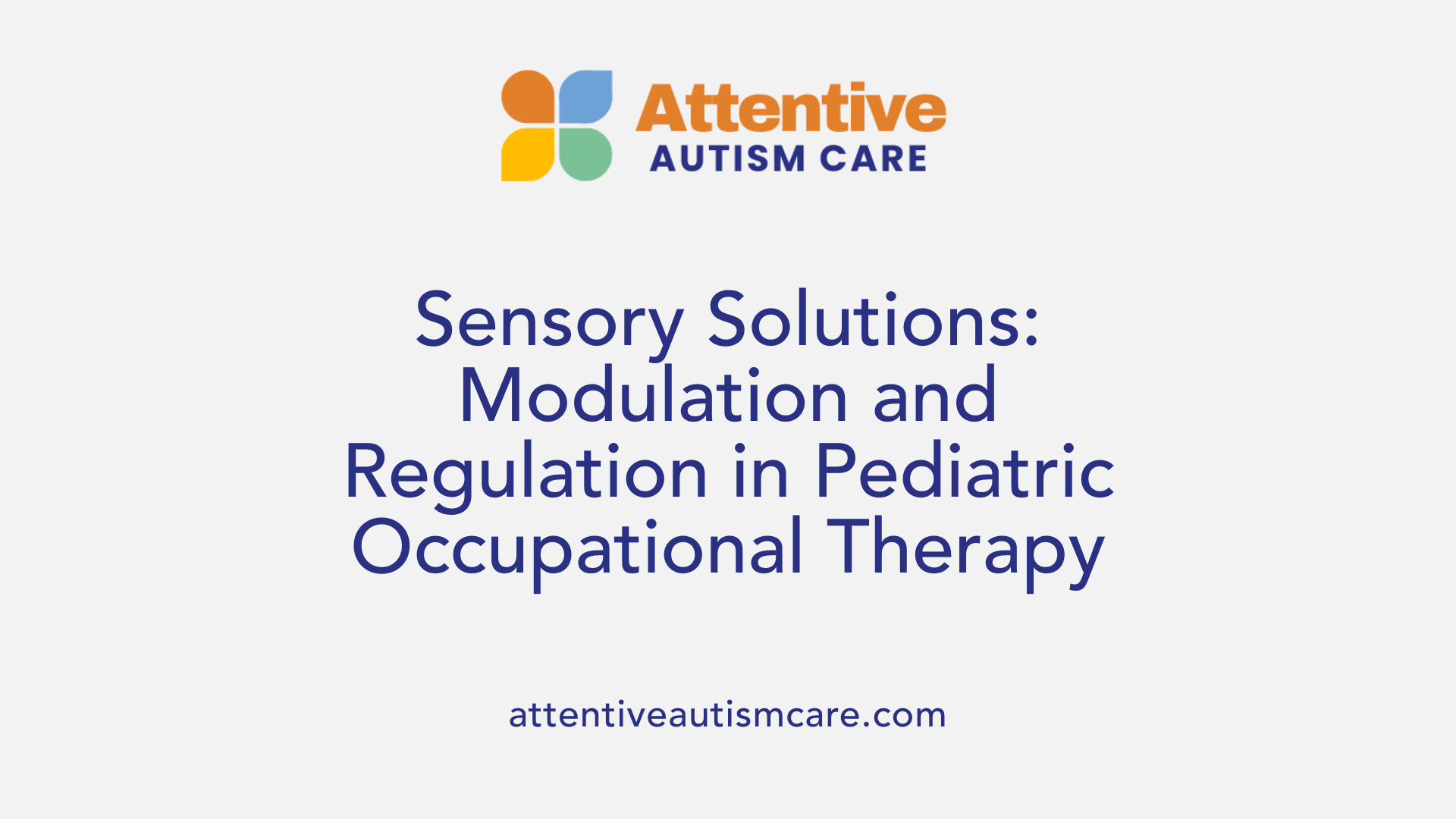
How does occupational therapy address sensory processing challenges in children with autism?
Many children on the autism spectrum face sensory modulation difficulties that can impact routine tasks such as toothbrushing or participating in school activities. Occupational therapy tackles these challenges by implementing sensory diets—customized programs that use tools like weighted blankets, pressure vests, and noise-canceling headphones. These help regulate sensory input and promote better sensory processing.
Play-based therapy is often combined with these strategies to maintain engagement and motivation. This approach allows children to develop essential motor, social, and daily living skills in a supportive, non-overwhelming environment. Therapy goals also focus on improving understanding of personal boundaries, emotional regulation, safety awareness, and sensory regulation.
By addressing sensory challenges through individualized interventions, occupational therapy enables children with autism to participate more successfully in daily life activities and promotes better functional outcomes across different settings.
Occupation-Focused Interventions for Adolescents in Transition
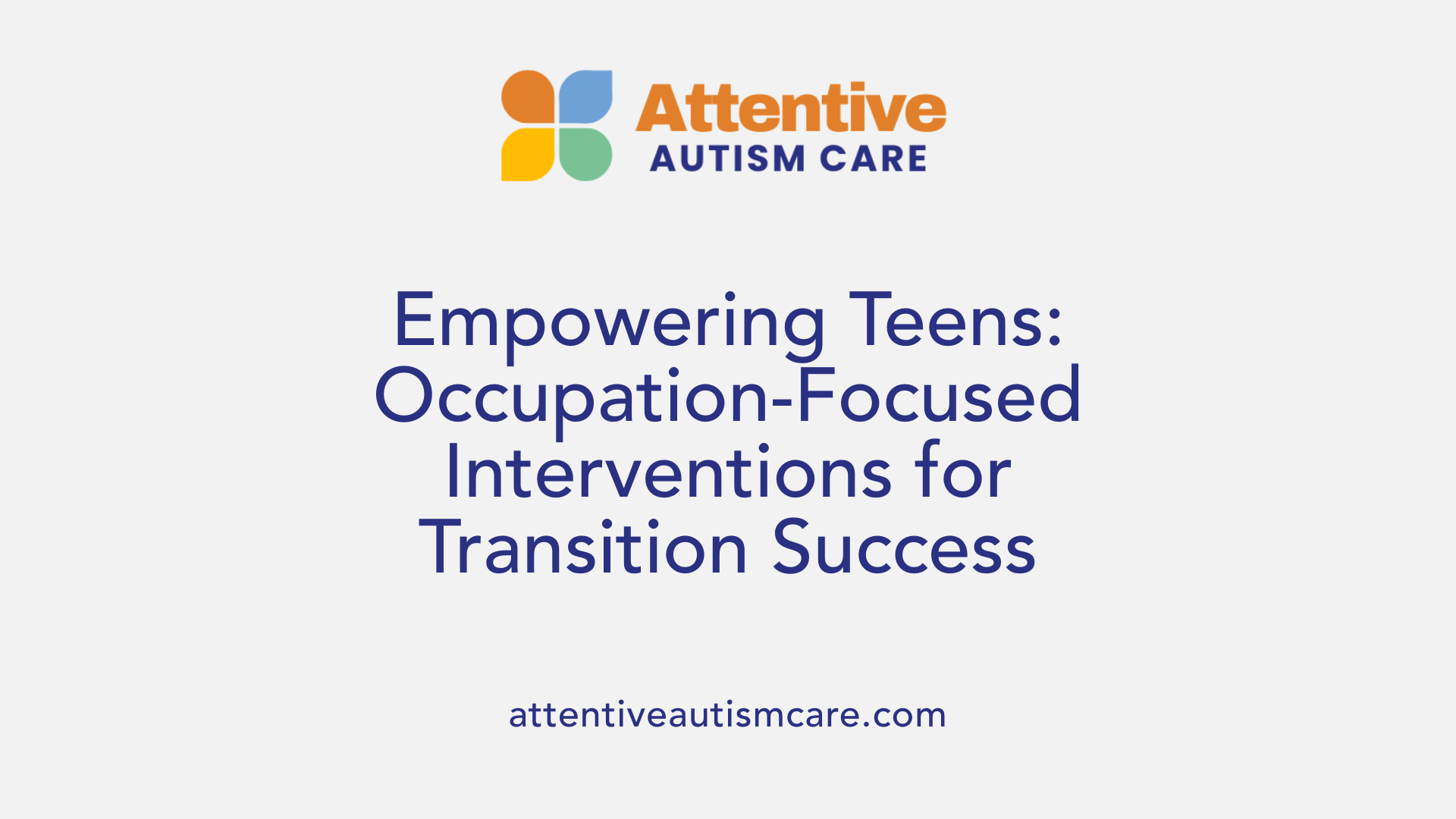
What occupational therapy strategies support adolescents with autism during their transition?
Occupational therapy for adolescents with autism spectrum disorder (ASD) emphasizes client-centered, occupation-based interventions that enhance functional independence in activities of daily living (ADLs) and work performance. To tailor these interventions, assessment tools such as the Canadian Occupational Performance Measure (COPM) and Sensory Profile are employed. These tools help identify the adolescent’s unique priorities, strengths, and sensory processing patterns, ensuring therapy aligns with individual needs.
Assessment tools like COPM and Sensory Profile
The COPM assists in setting personalized goals by focusing on the adolescent’s perception of their performance and satisfaction in daily occupations. The Sensory Profile evaluates sensory modulation difficulties that often affect participation in school, work, and social environments. Utilizing these assessments allows occupational therapists to plan targeted interventions that promote success across various contexts.
Group-based social skills training
Social skills groups play an important role by incorporating peer-mediated strategies that facilitate positive social interaction, communication, and relationship building. These group sessions create supportive environments where adolescents can practice and improve their social competencies essential for independent living and vocational settings.
Technology-enhanced visual supports and video modeling
Interventions frequently use video modeling and technology-enhanced visual supports to teach and reinforce routine tasks and social behaviors. For example, smartphone apps like 'Remember the Milk' can aid adolescents in organizing their schedules, boosting their autonomy and reducing anxiety around daily planning.
Client-centered, occupation-based goals
The therapeutic process revolves around occupation-focused goals tailored to each adolescent’s preferences and strengths. Employing methods such as the Goal–Plan–Do–Check approach encourages adolescents to actively participate in planning and evaluating their progress, fostering self-determination and confidence.
Functional independence in ADLs and work performance
By improving skills in managing daily routines, communication, and social participation, these occupational therapy strategies support a smoother transition to adulthood. They help adolescents build independence and readiness for work and community roles, ultimately enhancing quality of life and meaningful engagement.
| Component | Purpose | Example Intervention |
|---|---|---|
| COPM and Sensory Profile | Identify strengths and priorities | Customized goal setting |
| Group-based social skills training | Enhance social interaction and communication | Peer-mediated group activities |
| Video modeling and visual supports | Teach functional routines and behaviors | Technology apps for organization (e.g., 'Remember the Milk') |
| Goal–Plan–Do–Check method | Foster active participation and self-evaluation | Structured goal management methodology |
| Focus on ADLs and work-related skills | Promote independence and functional outcomes | Coaching for daily living and work tasks |
Integrating Technology and Coaching to Enhance Transition Outcomes
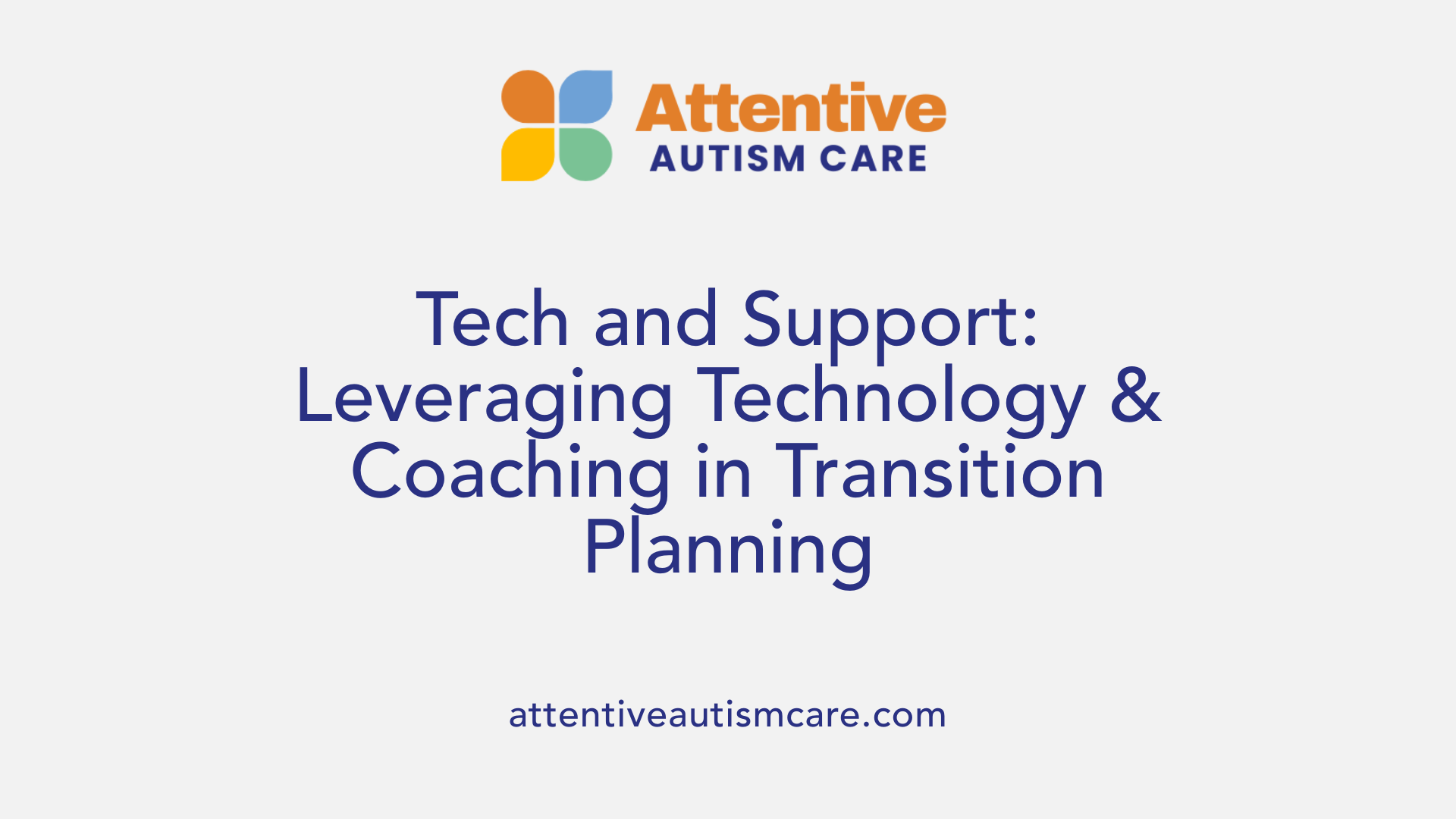
How does technology and coaching improve transition preparation for autistic adolescents?
Technology plays an important role in supporting autistic adolescents' independence during transition by facilitating organization and management of daily routines. Smartphone apps like 'Remember the Milk' allow adolescents to track their schedules and upcoming tasks, helping to scaffold executive functioning difficulties commonly experienced in autism. These tools promote self-management and reduce the cognitive load associated with planning and remembering daily responsibilities.
Alongside technology, care partner education and coaching are vital components of effective occupational therapy interventions. Therapists provide guidance and training to families, caregivers, and support staff on integrating technology and other strategies into adolescents’ everyday routines. This helps extend therapy beyond clinical sessions, ensuring consistent practice and boosting the adolescent’s engagement and autonomy.
This combined use of technology with supportive coaching enhances real-world skill generalization. Adolescents learn to independently manage complex daily activities, improving their functional independence and confidence. Furthermore, these strategies foster smoother transitions into adult roles by addressing both the practical demands and emotional challenges of increasing responsibility.
Practical application in routine management
Occupational therapists tailor recommendations to each individual’s needs, ensuring that smartphone apps and coaching methods align with personal goals. This might include structured prompts, visual schedules, and regular review check-ins using methods like the Goal–Plan–Do–Check strategy. By steadily building these habits, autistic adolescents gain improved organization, better time management, and enhanced participation in social and occupational activities.
In summary, integrating technology such as organizational apps with care partner coaching effectively supports autistic adolescents' transition towards greater independence. This empowers them to navigate the complexities of adult life with improved skills, engagement, and self-determination.
Collaborative Multidisciplinary Supports Including ABA Therapy
What is Applied Behavior Analysis (ABA) therapy and how does it complement occupational therapy?
Applied Behavior Analysis (ABA) therapy is a scientifically supported approach that focuses on understanding and improving behaviors through learning principles and modifying environmental factors. ABA aims to increase positive behaviors such as communication, social engagement, and daily living skills while reducing behaviors that interfere with learning or safety.
ABA therapy is delivered by trained professionals like Board Certified Behavior Analysts (BCBAs) using techniques such as discrete trial training, natural environment teaching, and positive reinforcement tailored to each individual's needs. These techniques can be adapted in various settings to support skill acquisition and generalization.
Collaboratively, ABA and occupational therapy work to support autistic individuals by addressing different but related areas. While occupational therapy primarily targets developing functional skills, sensory regulation, and participation in meaningful activities, ABA concentrates on behavior patterns that may influence an individual's ability to engage effectively. Together, they provide comprehensive support that promotes independence and social participation.
An increasing focus in both ABA and occupational therapy is the incorporation of autistic strengths, preferences, and neurodiversity-affirming perspectives. This means honoring the individual's unique traits and promoting positive identity while tailoring interventions to be person-centered and respectful.
Collaborative role with occupational therapy
Occupational therapists and ABA practitioners often collaborate by sharing assessment insights and aligning goals to ensure interventions complement one another. This collaboration can lead to environmental adaptations, coaching for caregivers, and coordinated strategies that enhance participation in daily activities and social contexts.
Addressing behavior and skill development
Behavior-focused interventions in ABA can reduce barriers to occupational therapy by decreasing anxiety, improving attention, or managing challenging behaviors, thereby facilitating engagement with therapy activities. Simultaneously, occupational therapy supports skill development in areas like sensory processing, self-care, and emotional regulation which further reinforce ABA goals.
Respect for individual strengths and neurodiversity
Both disciplines are moving toward embracing neurodiversity and using strengths-based language. Interventions aim not only to teach skills but also to affirm identity and promote well-being without imposing ableist perspectives. This approach fosters empowerment and meaningful participation for autistic individuals and their families.
Assessing and Measuring Effectiveness in Autism Transition Support
Use of standardized assessments and data collection
Effectiveness in occupational therapy for adolescents with autism spectrum disorder (ASD) is primarily measured through standardized tools that provide objective data. Instruments such as the Canadian Occupational Performance Measure (COPM), Sensory Profile, and behavior rating inventories help occupational therapists identify individual priorities, strengths, and challenges. These assessments form the basis for tracking the acquisition of skills essential for successful transition into adulthood.
Tracking progress in skills and independence
Regular monitoring of progress is critical. Therapists collect data on improvements in functional independence, daily routine skills, social engagement, and behavioral changes. Visualization of this data allows for clear insight into each adolescent's development over time. Tracking progress in areas like activities of daily living (ADLs), social skills, and work performance informs how well interventions support increasing autonomy and participation.
Adjusting interventions based on outcomes
Ongoing evaluation results directly influence intervention strategies. When progress data indicates plateauing or challenges, therapists adjust approaches accordingly—perhaps modifying video modeling techniques, introducing new visual supports, or changing the frequency of social skills group sessions. This flexible, data-driven approach ensures interventions remain personalized, effective, and aligned with evolving goals during the transition phase.
Importance of involvement of autistic perspectives
Including autistic voices is essential throughout the measurement process. By incorporating self-report and feedback from adolescents themselves, occupational therapy respects individual preferences and values. This neurodiversity-affirming approach enhances the relevance of outcomes and supports trauma-informed care principles, ultimately fostering greater engagement and satisfaction with interventions.
Overall, these evidence-based measurement practices enable occupational therapists to deliver client-centered, occupation-focused interventions that maximize meaningful participation and independence during the critical transition to adulthood.
Addressing Controversies and Advocating for Ethical, Strengths-Based Care
What are the controversies surrounding ABA therapy and how are they being addressed?
Applied Behavior Analysis (ABA) therapy, widely used in autism interventions, has sparked significant debate. Critics argue that some ABA practices overly emphasize compliance, potentially suppressing natural autistic behaviors such as stimming and leading to emotional distress. This focus on conformity has raised concerns about undermining autistic individuals' autonomy and the principles of neurodiversity.
In response, the field is shifting toward more ethical, person-centered approaches. Modern frameworks prioritize positive reinforcement that respects individuality and avoids forcing behavioral conformity. These approaches align with occupational therapy’s commitment to strengths-based care, incorporating autistic perspectives to affirm neurodiversity.
Neurodiversity-Affirming and Trauma-Informed Practices
Emerging evidence supports interventions that leverage autistic strengths and interests, aiming to promote inclusion and participation without causing harm. Occupational therapy is incorporating trauma-informed care, recognizing the importance of creating safe environments and respecting emotional experiences.
Avoiding Ableist Terminology
Using strengths-based language is crucial in treatment and research to avoid ableist terminology. This shift fosters respect, dignity, and empowerment for autistic people and their families.
Person-Centered and Respectful Interventions
Occupational therapy guidelines emphasize involving autistic voices in planning and research. Tailoring interventions to individual needs ensures that care supports autonomy, self-determination, and meaningful participation in daily life.
These evolving practices address criticisms of earlier interventions, moving toward ethical, respectful, and affirming supports that champion well-being and independence.
Embracing Holistic, Evidence-Informed Occupational Therapy for Successful Autism Transitions
Preparing autistic adolescents for the transition to adulthood requires comprehensive, individualized support that addresses the complex interplay of sensory, behavioral, social, and functional challenges. Occupational therapy, grounded in robust scientific evidence and enriched by multidisciplinary collaboration including ABA, provides effective strategies to promote independence, participation, and self-determination. By embracing strengths-based, neurodiversity-affirming, and trauma-informed practices alongside technological supports and strong caregiver involvement, occupational therapy offers a pathway for autistic individuals to navigate transition with confidence and autonomy. Continued research and involvement of autistic perspectives will ensure these interventions remain respectful, relevant, and impactful, ultimately enhancing quality of life and societal inclusion.
References
- Occupational Therapy Practice Guidelines for Autistic People ...
- How Occupational Therapy Can Help Children with Autism
- Occupational Therapy Interventions for Adolescents With ...
- How to Become an ABA Therapist - School of Education
- How to Become an Applied Behavior Analyst (ABA) Therapist
- The Controversy Around ABA
- Is ABA therapy harmful? The controversy explained
- Debunking 7 Common Myths About ABA Therapy - GSEP Blog
- ABA Techniques: Strategies for Behavior Analysts - GSEP Blog
- Applied Behavior Analysis (ABA)










